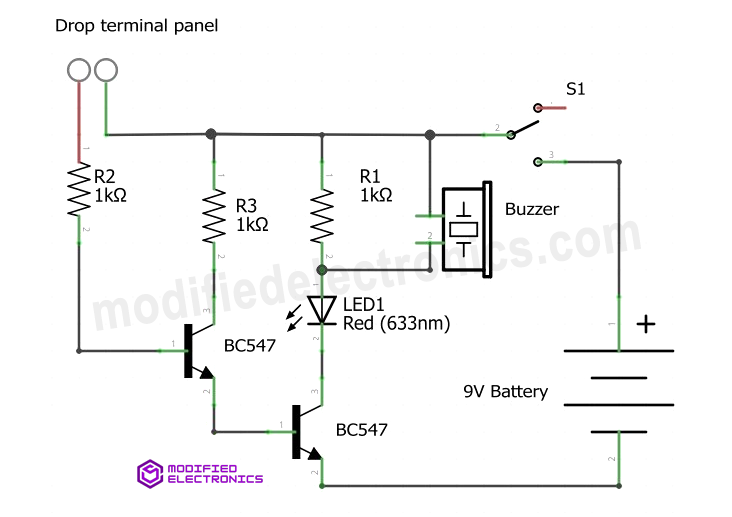Introduction
This rain alarm circuit, employing BC547 transistors, is a simple and effective way to detect rainfall. By utilizing the conductivity properties of rainwater, the circuit triggers an alarm when raindrops bridge the transistor terminals. This tutorial will guide you through assembling the Rain Alarm | Rain Detector Circuit using BC547 for practical use.
Hardware Required
Circuit Diagram:

Transistor:
Utilizing the BC547 transistor in this circuit serves as an amplifier for the signal or electrical power. This semiconductor has three terminals — collector, base, and emitter. The transistor’s function is to act as a gate when a voltage is applied to its terminal, allowing the flow of current to the other external circuit loop.
Working:
The circuit employs two transistors; however, it can function with a single transistor for water detection. The transistor has three pins: collector, base, and emitter. When a signal voltage is applied to the base, or when the base voltage is high, the charge on the collector shifts toward the emitter. In this circuit, the first transistor connects the ground pins of the buzzer and LED to the ground voltage terminal when a signal is given to the base. The signal to the second transistor comes from the emitter side of the first transistor. Two drop terminals are connected to the base of the transistor and the main positive voltage. When a water drop bridges these terminals, the main voltage connects to the base of the first transistor. A 1K resistor is added to prevent voltage increment damage. This action causes the first transistor to drop the voltage to the base of the second transistor. The second transistor then connects the buzzer and LED to the ground, making the light glow and the buzzer beep.
Applications:
- Automated Irrigation Systems: This circuit can be incorporated into an automated irrigation system to detect rain and control watering.
- Home Automation: Used as part of a home automation system, the rain alarm can trigger actions like closing windows or activating weatherproofing mechanisms.
- Vehicle Protection: Placed strategically, the rain alarm can serve as a simple yet effective alert system to protect vehicles from unexpected rain.
- Greenhouse Monitoring: Implementing this circuit in a greenhouse provides a cost-effective solution for monitoring and responding to changes in humidity.
- Outdoor Event Planning: Event planners can utilize rain alarms to monitor weather conditions and take timely precautions for outdoor events.